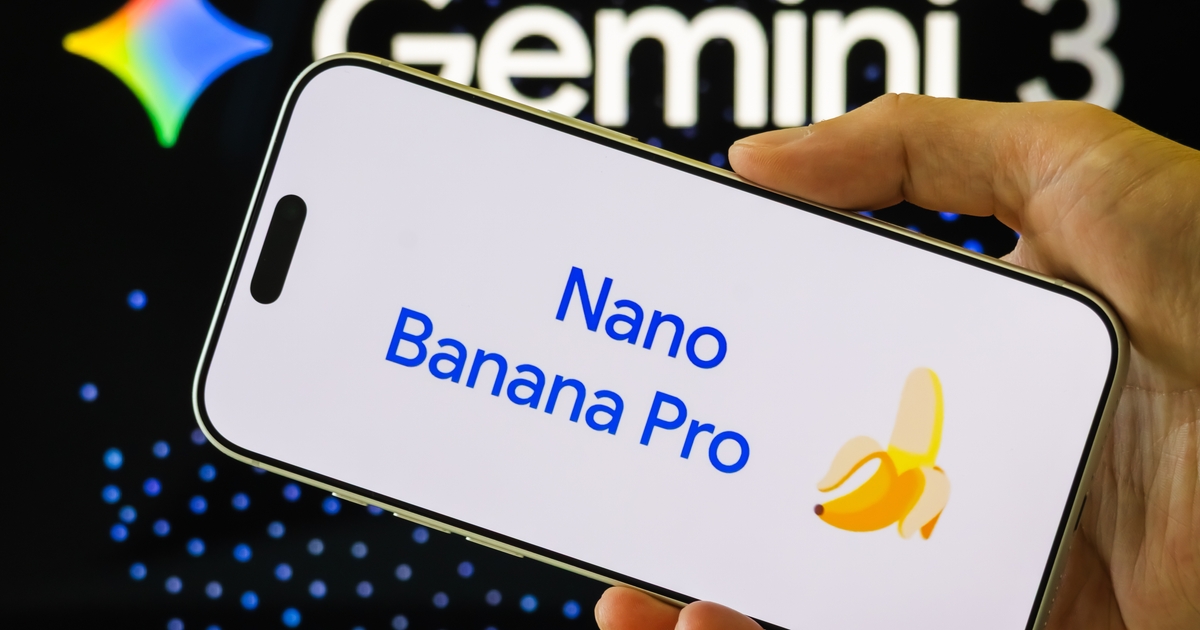Google’s Nana Banana Pro demonstrates that image-generating AI models are improving not only in generating images but also in grounding them in context.
Google on Nov. 20 introduced Nano Banana Pro, the latest version of its image generation and editing model. It is built on the Gemini 3 Pro model and uses Gemini’s reasoning and knowledge capabilities to help visualize information and design images, from prototypes to infographics.
The model enables users to generate visuals using Google Search’s knowledge base that are more accurate than produced by the previous generation of Nano Banana Pro. The model is also good at generating images with legible text; previously text in images could be illegible. Users can also blend more elements than previously — now 14 images, Google said. There is also a capability that lets users select, refine and transform any part of an image with improved localized editing. Users can adjust camera angles, change focus and apply color grading, Google said.
Google is not the only vendor with an image-generating model that allows for localized editing. Adobe Firefly enables users to edit generated images directly within Photoshop and Adobe Illustrator.
Other vendors also have capabilities such as camera angle change. For example, earlier this year, Stability AI introduced Stable Virtual Camera, a multi-view video generation with camera control.
The Art of Generating Ideas
The updates Google made to Nano Banana Pro align with what is known as literate programming, said Bradley Shimmin, an analyst at Futurum Group. Introduced in 1984 by Donald Knuth, literate programming is a method of combining programming language with documentation language.
Google is applying that same idea to Nano Banana with techniques such as mockups, Shimmin said.
“To not just document how the software works but to iterate and build the software using these images to be able to create a fully agentic process of both the deployment and the iteration of an idea that incorporates more than just code or just markdown text, but also includes visual rendering of those ideas,” he said.
One practical application of this process is for directors who are trying to storyboard an idea. Not only can Nano Banana Pro create a storyboard, but users can also use it to create a video and write the script that accompanies it.
“It’s taking all these very different but highly interdependent creative tasks and bringing them together using this multimodal world that we now inhabit,” Shimmin said.
Critical thinking
Because models like Nano Banana can be highly creative, there may be a perception that they hinder critical thinking.
However, for Shimmin, the tool is similar to other technologies that came before it, such as the calculator.
“You can view it as an offloading of mental faculty, you could view it as an accelerator of mental faculty, and in truth, it’s both,” he said. “It amplifies, accelerates, but also can dampen, and curtail those very aspects that we come to think of as being uniquely human.”
Consumers and students can access Nano Banana Pro now on the Gemini app. Pro and Ultra subscribers have access to higher quotas when creating models. Professionals have access to Google Ads as Google will update the image generation there to Nano Banana Pro. It is also available to Workspace customers in Google Slides and Vids. The model is available in the Gemini API and Google AI Studio to developers and enterprises. Enterprises can also start building with it on the Vertex AI generative AI platform, with the model expected to be available soon in Gemini Enterprise.

